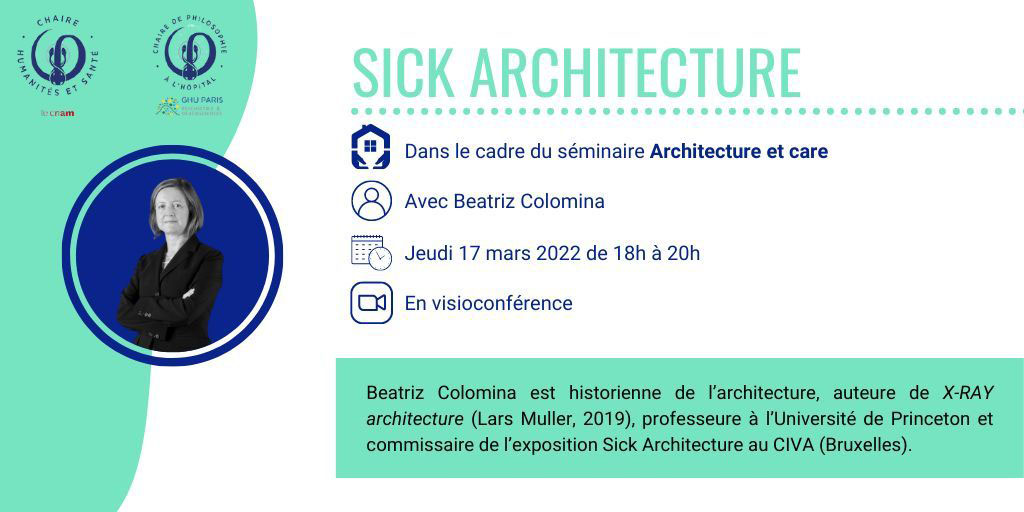Prochain séminaire Architecture et care le 17 Mars 2022

le 11/03/2022
"Sick Architecture"
Prochaine séance du séminaire Architecture et care, animé par Eric de Thoisy (Directeur de la recherche de l'agence SCAU).
Avec Beatriz Colomina, historienne de l'architecture. Ce séminaire sera dispensé en anglais.
Le jeudi 17 mars, en visioconférence par Zoom.
Inscription 👉 https://lnkd.in/dJnhWwyG
Architecture and medicine have always been tightly interlinked. Architectural discourse weaves itself through theories of body and brain, constructing the architect as a kind of doctor and the client as patient. Every age has its signature afflictions and each affliction has its architecture. The age of bacterial diseases, particularly tuberculosis, gave birth to modern architecture, to white buildings detached from the “humid ground where disease breeds,” as Le Corbusier put it. The discovery of streptomycin put an end to that age. In the postwar years, attention shifted to psychological problems. The architect was not seen just as a doctor but as a shrink, the house not just a medical device for the prevention of disease, but for providing psychological comfort, “nervous health.” The twenty-first century is the age of neurological disorders: depression, ADHD, borderline personality disorders, burnout syndrome and allergies—the “environmentally hypersensitive” unable to live in the modern world. But pandemics have returned. With COVID-19, a virus is completely reshaping architecture and urbanism and once again disease exposes the structural inequities of race, class and gender. Will architectural discourse and practice likewise reshape itself ?